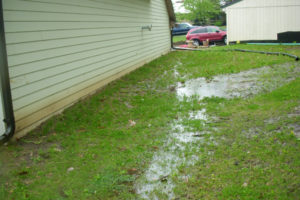
Alas, poor Yorick, he tested positive for mold. Well, not Yorick, but his abode. Yorick’s home has mold, lots of mold, elevated levels of mold.
In this post, we review mold remediation, which is just a fancy way of saying “fixing the mold problem.”
And what, pray tell does nutella have to do with all of this? See our previous post about challenges of mold and how best to conduct a mold inspection.
And Nothing is, But What is Not – How to Remove Mold
So we discover that mold is alive and kicking and spreading like sporefire. What are the next steps? Whom should we call? What should we expect? Will the sun rise tomorrow? (OK, that was mildly overdramatic.)
Mold remediation procedures typically involve the following:
- Identify areas of visible and high airborne concentrations of mold and contributing sources of moisture.
- Eliminate all material moisture sources.
- Isolate contaminated areas; this entails sealing the area with a physical barrier (plastic sheeting) and creating a negative air environment with the use of forced air filtration.
- Remove contaminated materials – bag, seal, and discard; this includes affected drywall, carpet, insulation, and structural materials.
- Treatment – Manual agitation with HEPA vacuuming, soda blasting or dry ice blasting.
- Test – After remediation is completed, conduct post-remediation (clearance) testing is conducted to determine if the clean-up effort was successful; in fact, post remediation testing must be conducted prior to installation of the new finish materials.
Much Ado About Mold – Common Problems with Mold Results
As you may imagine, remediating a mold problem can be a daunting process, but understanding what to expect can help to navigate this difficult issue with minimal hassle and expense. Some common problems we find that obstruct successful mold remediation include:
- Disputed test results
- Unqualified contractors
- Incomplete scope of work
- Failure to address the sources of moisture that led to the mold problem
- Insufficient post-remediation air filtration (scrubbing) to ensure all airborne spores are removed after clean-up work is completed; failure to perform this important step often leads to failed clearance tests, wasted time and additional costs
Repent What Is Past, Avoid What Is To Come – How to Minimize Common Problems
Thankfully, avoiding common problems is straightforward for those of us with wisdom and experience. We recommend the following guidelines with regards to minimizing common problems related to mold remediation:

Address moisture, then fix the mold – Not much point in fixing mold if the source issue isn’t fixed. Our Mold Assessment, which includes infrared scans, should provide everything you need to confidently address moisture issues. Always make sure that all moisture sources that have contributed to the mold contamination are identified and addressed before actual mold remediation begins. Sources of water penetration include roofing leaks, foundation leaks, flashing leaks, window leaks, plumbing leaks, negative grading, missing gutters/downspouts, and ventilation problems. If you don’t fix the moisture penetration, mold likely will develop again, leading to another cleanup.
See the downspout extender in the grading photo? Uphill gravity apparently breaks all of the laws of physics!
Engage Qualified Indoor Air Quality (IAQ) specialists – Just like any other discipline, quality of results are correlated to quality of human resource. Therefore, select a professional, qualified contractor who ensures that proper containment procedures are followed to protect the occupants’ health, proper documentation of proposed and completed work is provided to satisfy disclosure to prospective buyers, and warranty coverage is obtained in the event remediation fails to pass post-remediation clearance testing
Leverage multiple suppliers – Simple rule of thumb is to obtain at least two bids from experienced, qualified IAQ specialists and validate references.
Match scope with identified issues – Always ensure that the scope of work proposed by the contractor properly addresses all areas of concern identified in the mold assessment report.
What you can’t see can still hurt you – After all mold removal procedures are completed, proper air filtration, or air scrubbing, must be conducted by the remediation contractor; this ensures that airborne mold spores released during the remediation process are removed prior the completion of post-remediation clearance testing.
From this Day to the Ending of the World, be Resolved to Clearance Testing
Clearance testing is performed to determine if the remediation process has been successful. If remediation has been properly conducted, there should be no visible mold evident anywhere in the interior of the building and to that, we shout “Bravo!” Successful remediation should result in mold levels that are equal to or lower than those found at the exterior of the property.
And poor Yorick? You don’t really need to worry about him after all because he turned out to be quite fine.
